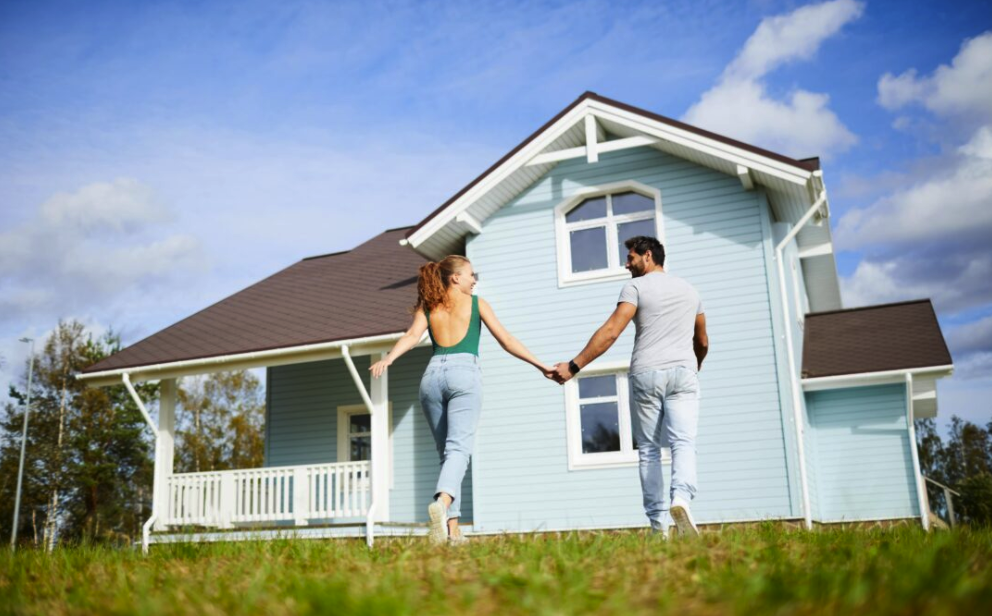The color of your roof does matter. The main reason is for design aesthetics and curb appeal. The design and color choices for your home can have a major impact on how much you get for your home later. Another major consideration when choosing a color for your roof is what color roof can help save you money.

Curb Appeal
When choosing a color for your roof you want to make sure you are matching the aesthetic of your home. You should consider the color and texture of your siding, your shudders, the slope of your roof and the layout of your property.
Curb Appeal Considerations
Color and texture of your siding:
This is the most important piece to think about. You do not want your siding and your roof color to clash. If you have a textured siding, you may want to stay away from textured roofing color pallets. On the other hand, if you have a very simple and plain siding, a textured color pallet for your roof could add some much-needed flair. If you have light and neutral siding, it may look good to have a brighter or darker color roof and vice-versa.
Shutters Considerations:
You want to consider matching your shutters to your roof or at least make sure they match and don’t clash. Color coordinate your siding, shutters and roof color, texture. A specialist at Cache Roofing in Jacksonville, Fl can help make the decision.
Roof Slope Considerations:
Another important thing to think about is the slope of your roof. The more sloped your roof is the more visible to color. A loud or overwhelming color may look good on a roof that is flatter because you only see pops of the color. Whereas on a very steep roof the color may overwhelm the rest of the home. You don’t want to only see the roof when you look at your home. Understanding how much of your roof is truly visible due to the slope of your roof is key in considering how loud or neutral of color to choose.
Property Layout Considerations:
You’ll want to consider different colors and textures for your roof depending on the type of property you have. A large, open property with a lot of sun exposure may be better suited for lighter, more reflective roof color. A property with a lot of tree coverage may need a roof that blends more with the tree line or is bright and stands out against the trees depending on the style and look you are going for. A smaller property may need a color that broadens the home instead of shrinks the home. Many times heavy contrast or many dark colors can make a property look sunken in or smaller.

Roof Color and Money Savings
There is some science behind roof color and energy use. Depending on our climate, you want to go with a light, reflective roof or a dark, heat-absorbing roof.
Light, reflective colors can keep your roof up to 40 degrees cooler, according to the Roofing Calculator. Proper roof installment and installation should help the energy usage in your home the most, but a light, reflective color can help the process. If you live in a hot, sunny climate such as Florida, a light, reflective roof can help you save a little money year around.
On the other hand, if you live in a relatively cool climate with a lot of snow, a dark roof may work better. A dark roof can absorb sunlight and heat helping keep your roof warm. Darker roofs also help melt snow and ice.
The Roofing Calculator says: “Dark colors absorb heat, and light colors reflect it. While the best protection against heat loss and gain in your home is sufficient insulation, the color of the shingles can affect attic temperatures by 40 degrees.”
A study done by the Oak Ridge National Laboratory, the Lawrence Berkeley National Laboratory and the Florida Solar Energy Center showed the relation between roof color and roof temperature.
The study found that a “bright white coating (ceramic, elastomeric) on smooth surface” has about an “80%” reflectance quality. The air in the roof stayed around 15 degrees over the air temperature. A “white metal” has about “70%-80%” reflectance quality and the roof temperature was around 15 degrees to 25 degrees higher than the air temperature. A “bright aluminum coating” has a “55%” reflectance quality and the roof temperature was 51 degrees higher than the air temperature. A dark red tile has an “18%-33%” reflectance quality and the roof temperature was 62 degrees to 77 degrees higher than the air temperature. A “dark shingle” has an “8%-19%” reflectance quality and the roof temperature is 76 degrees to 87 degrees higher than the air temperature. A “black material” had a roof temperature 90 degrees higher than the air temperatures.



Recent Comments